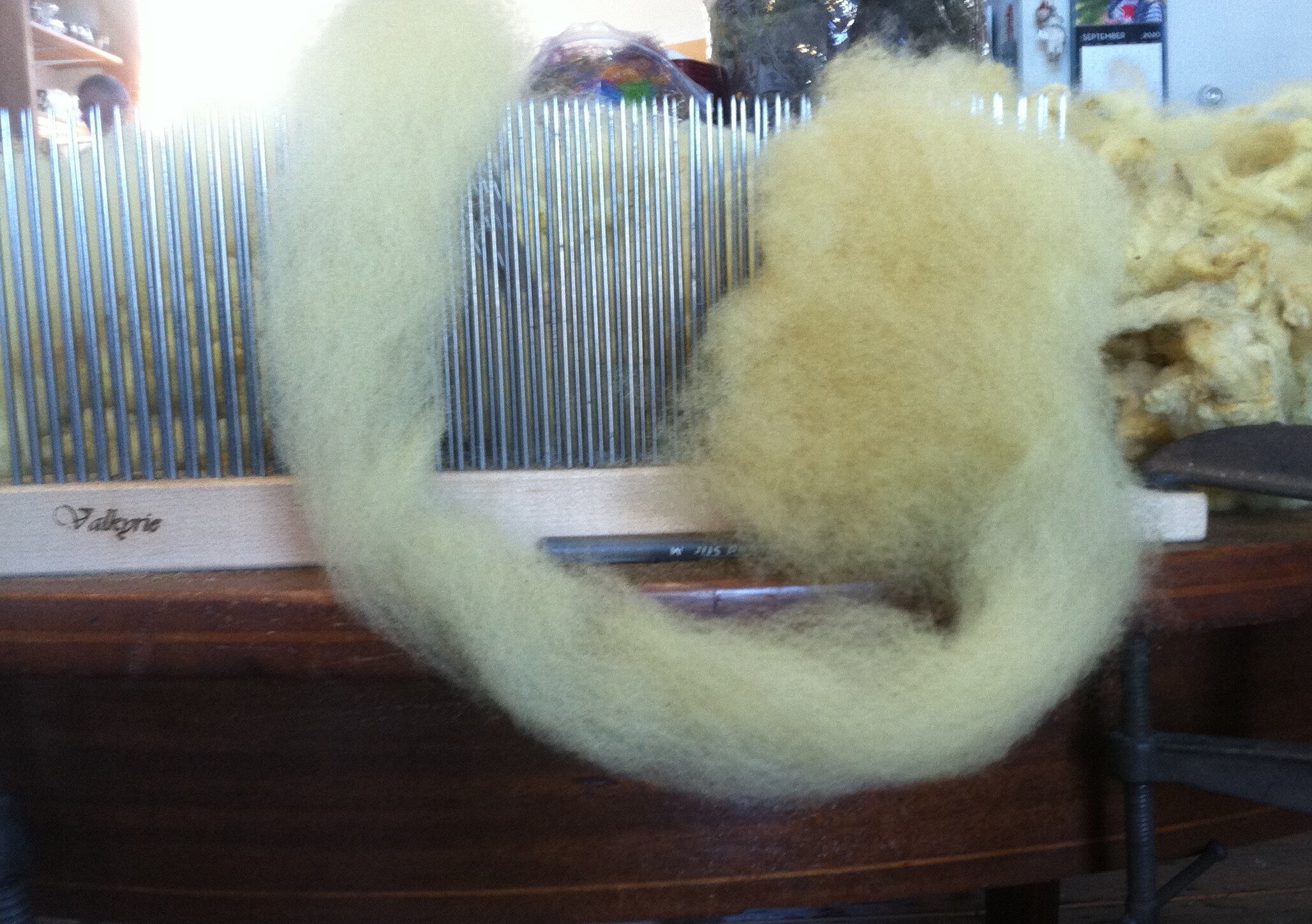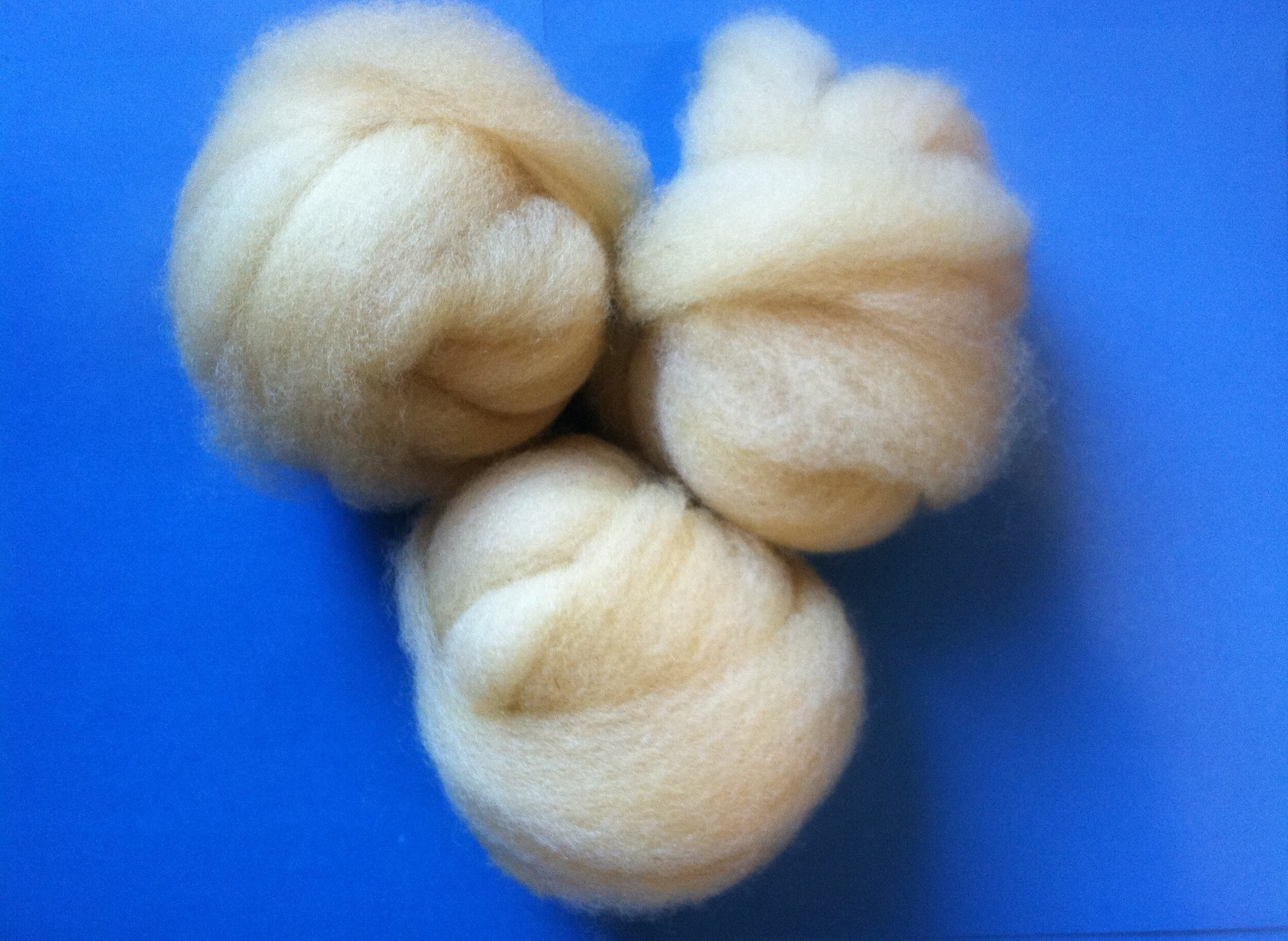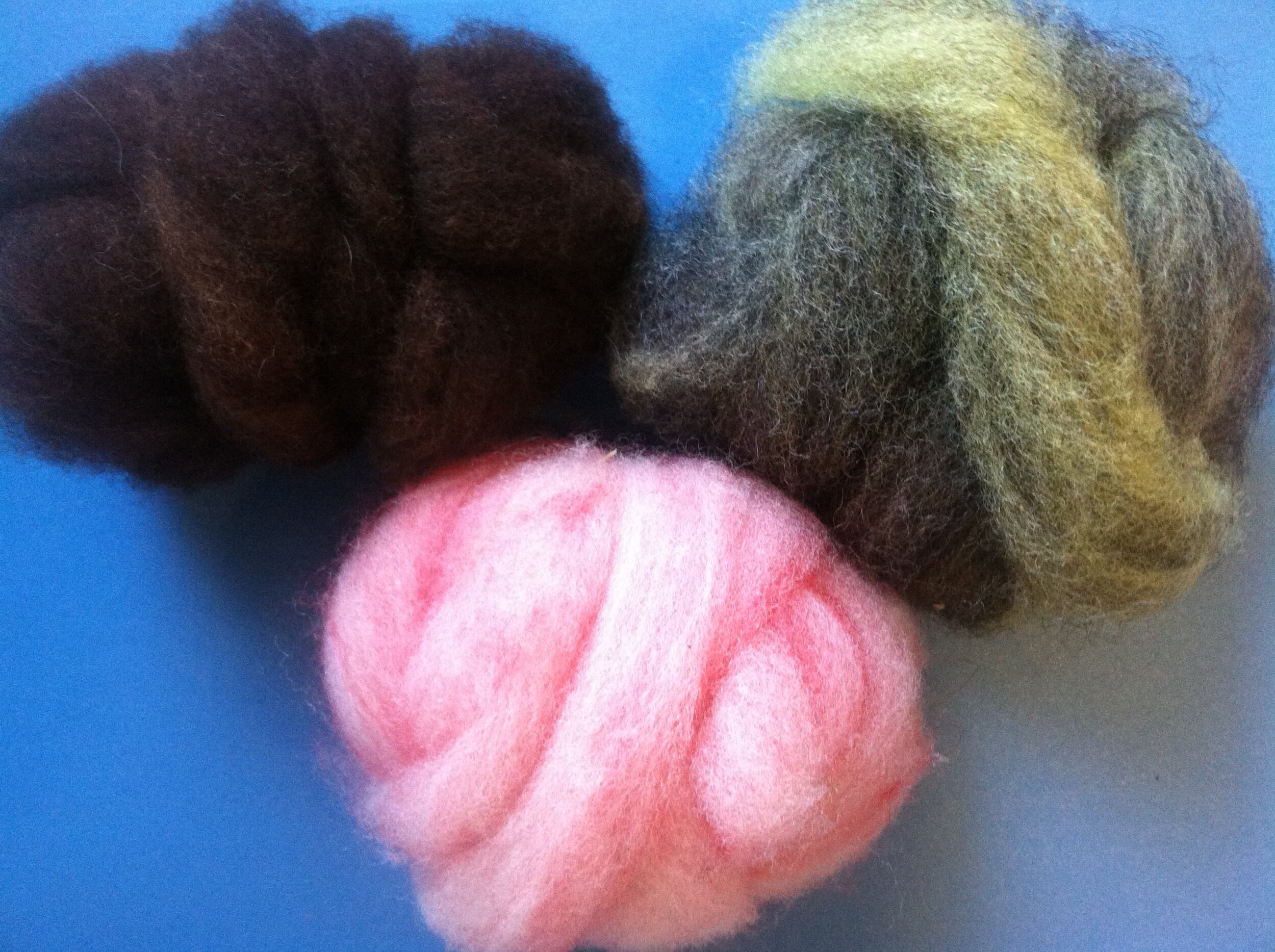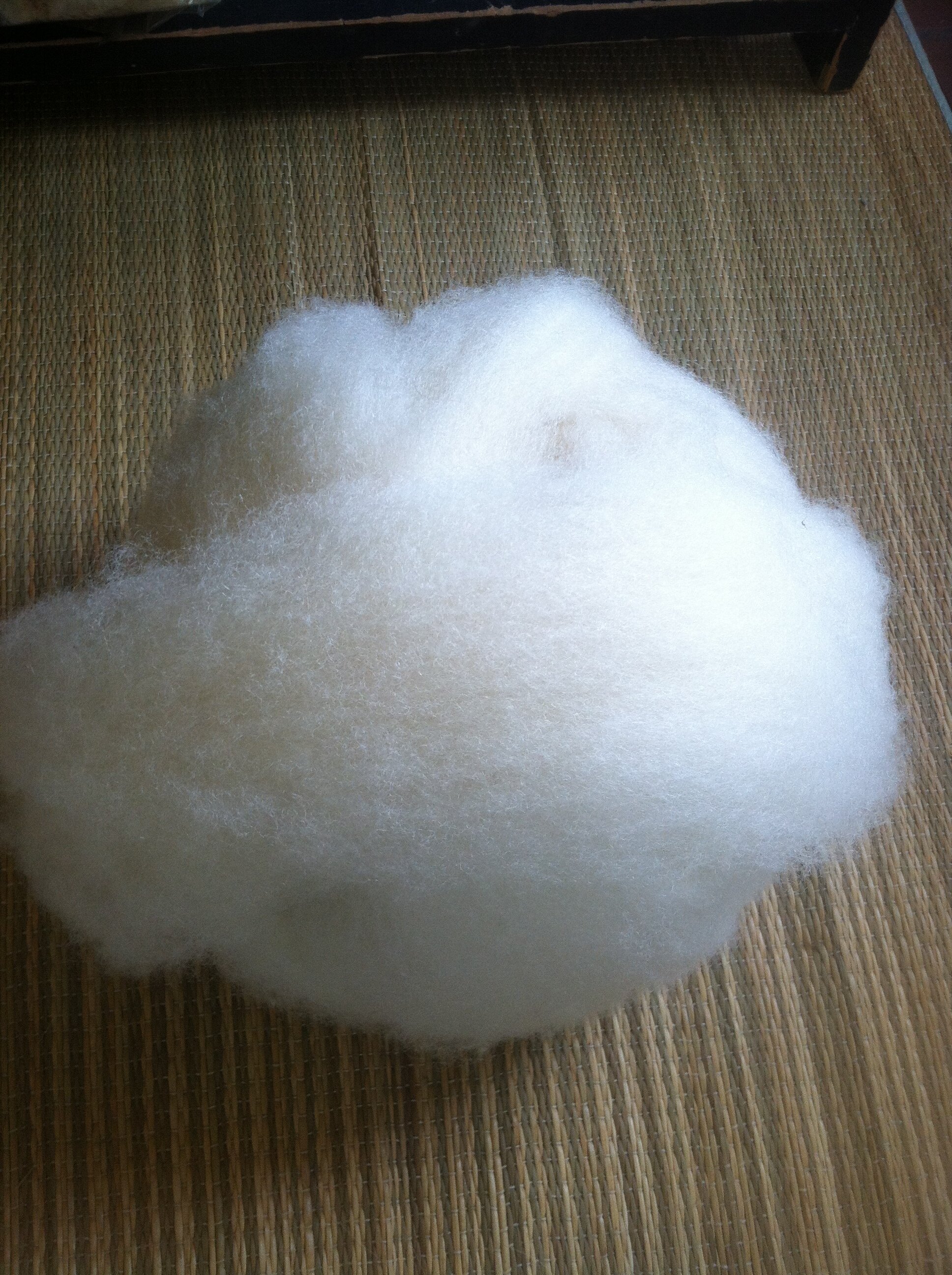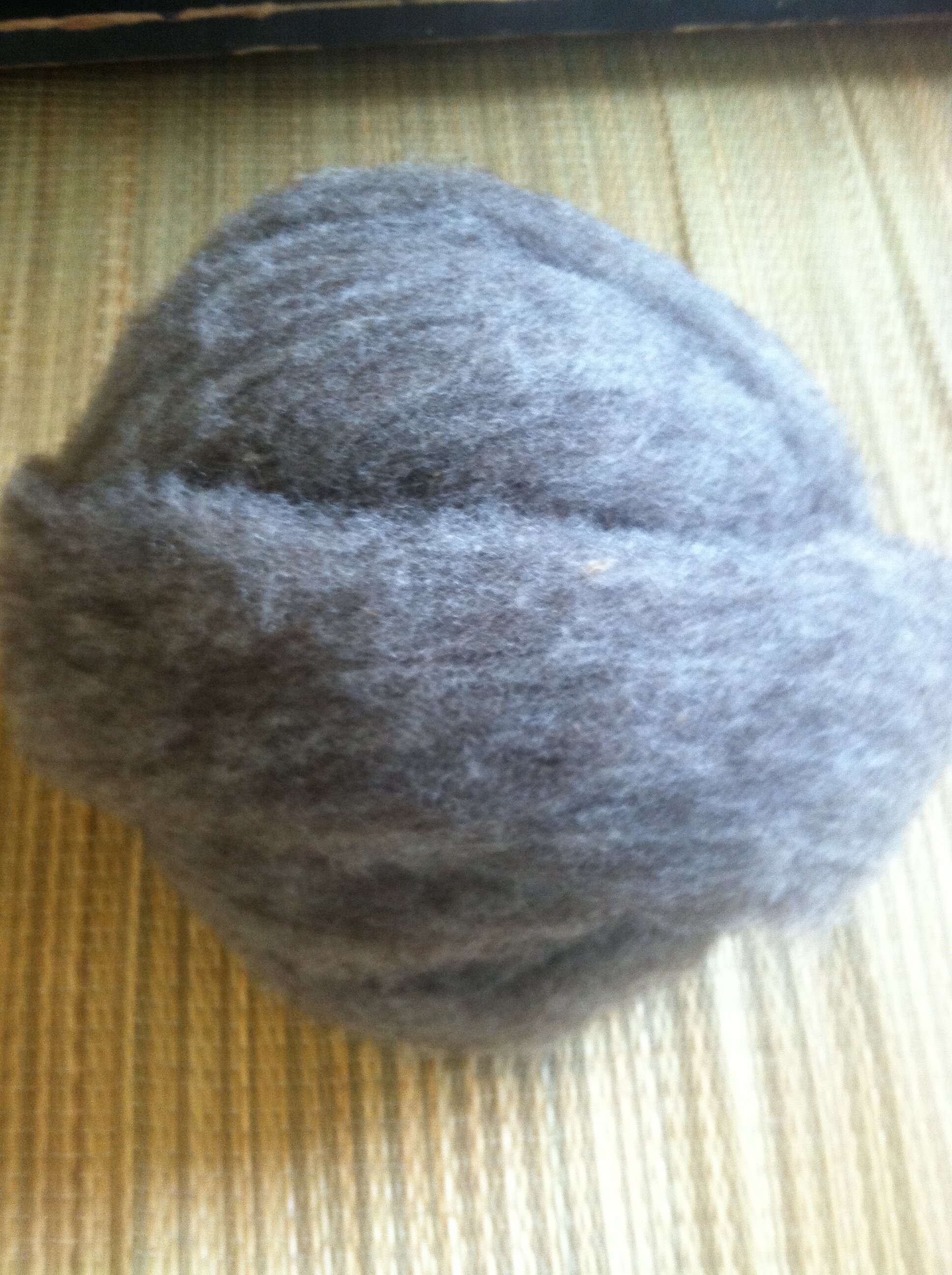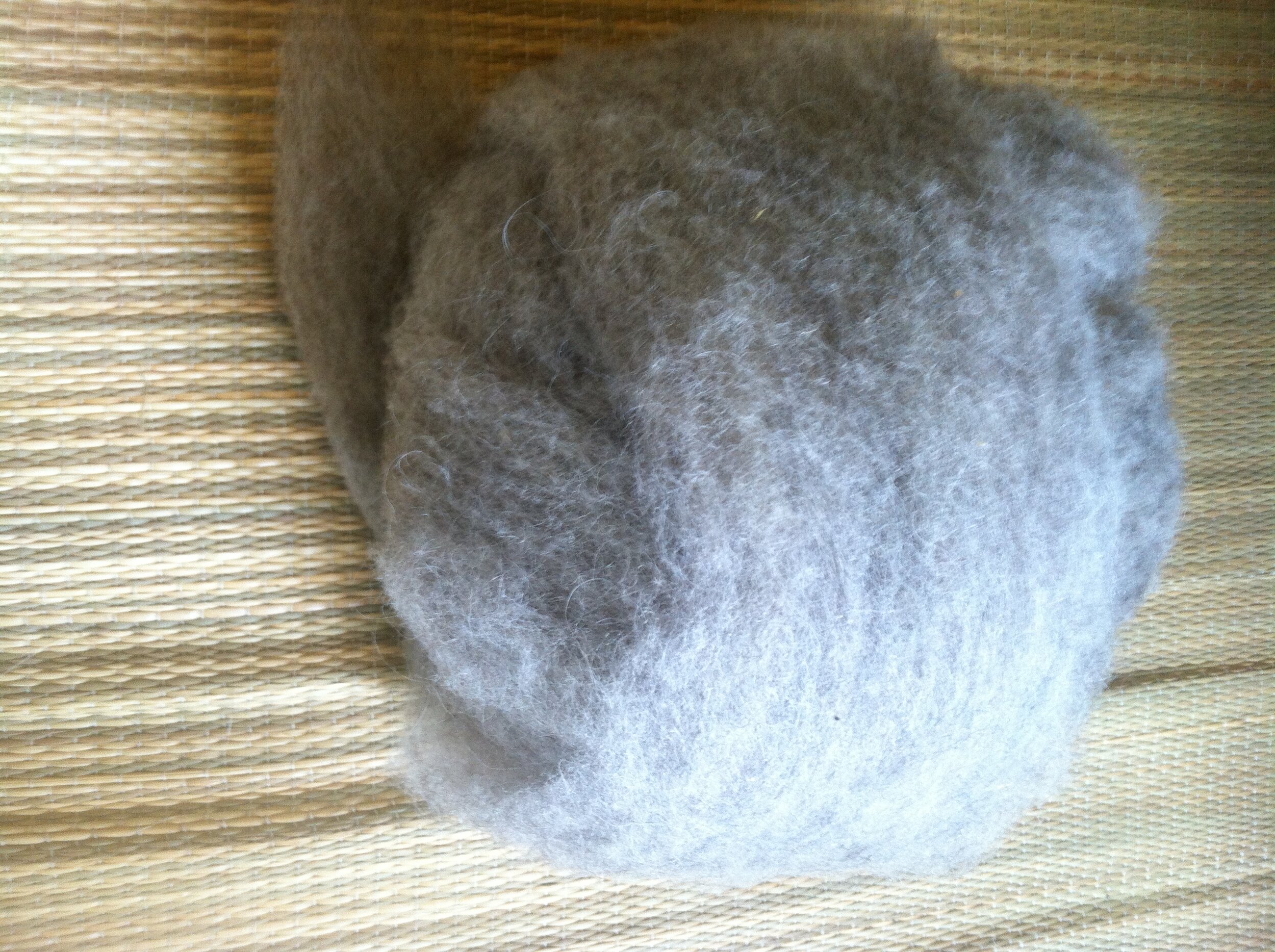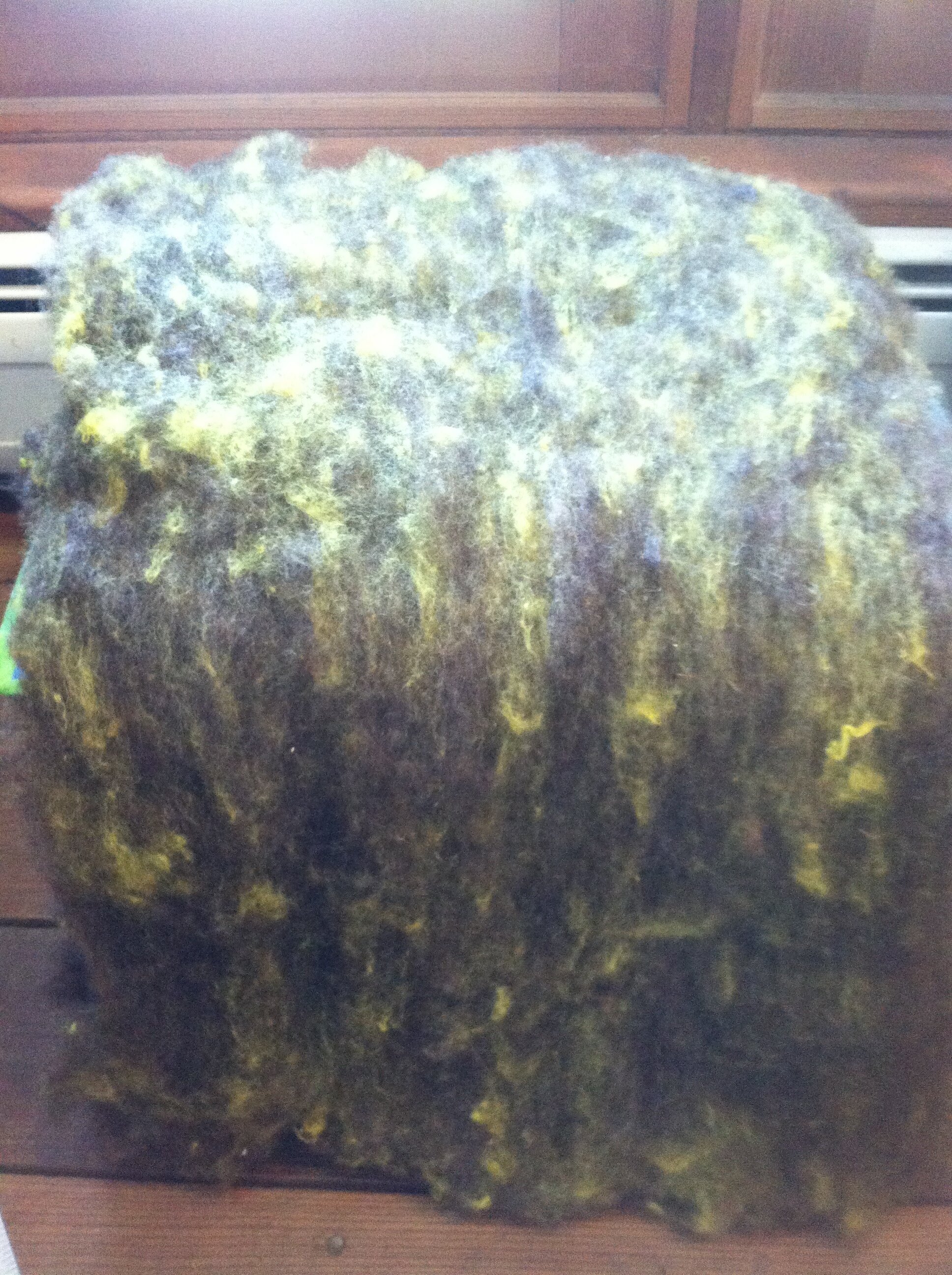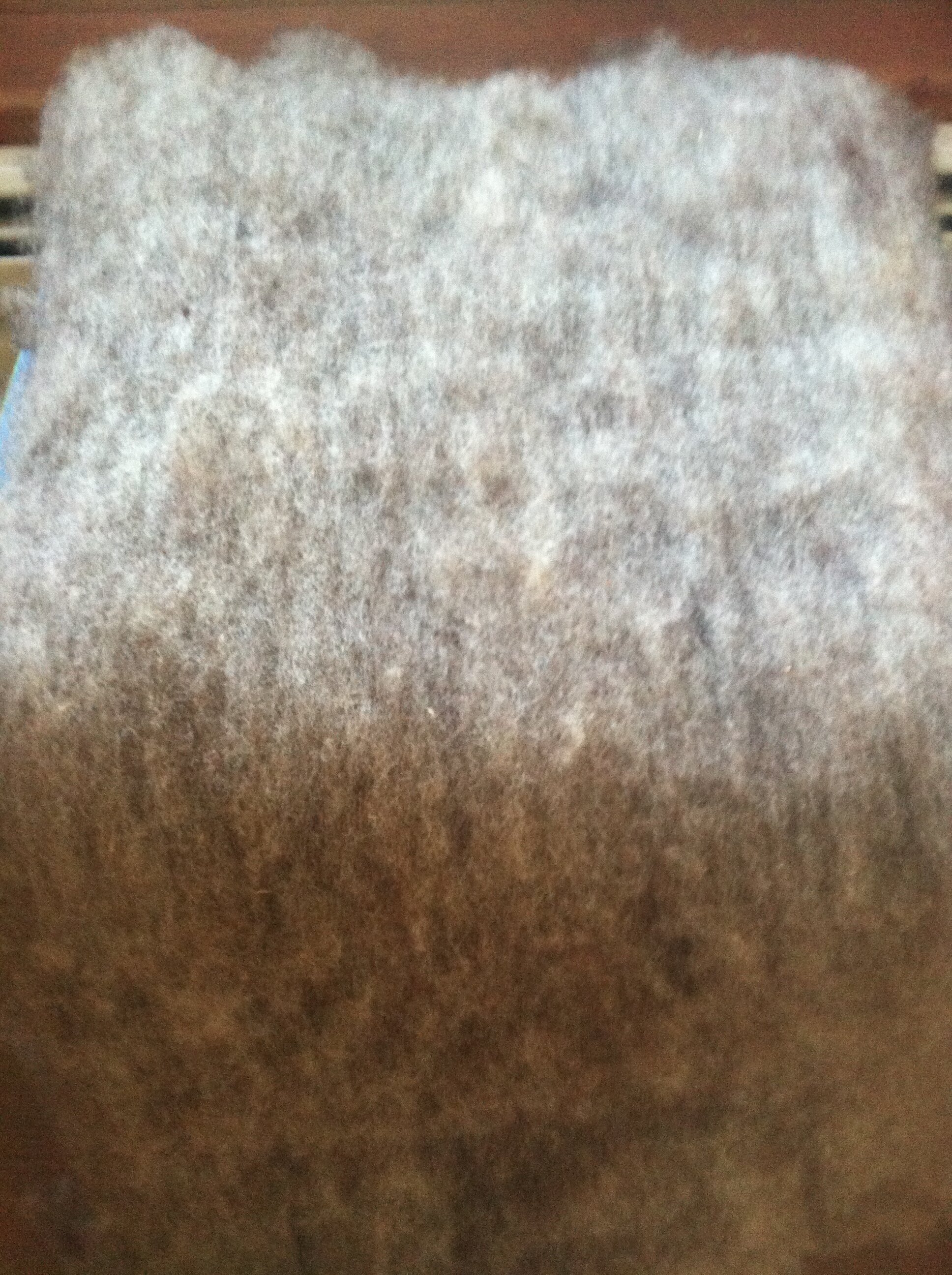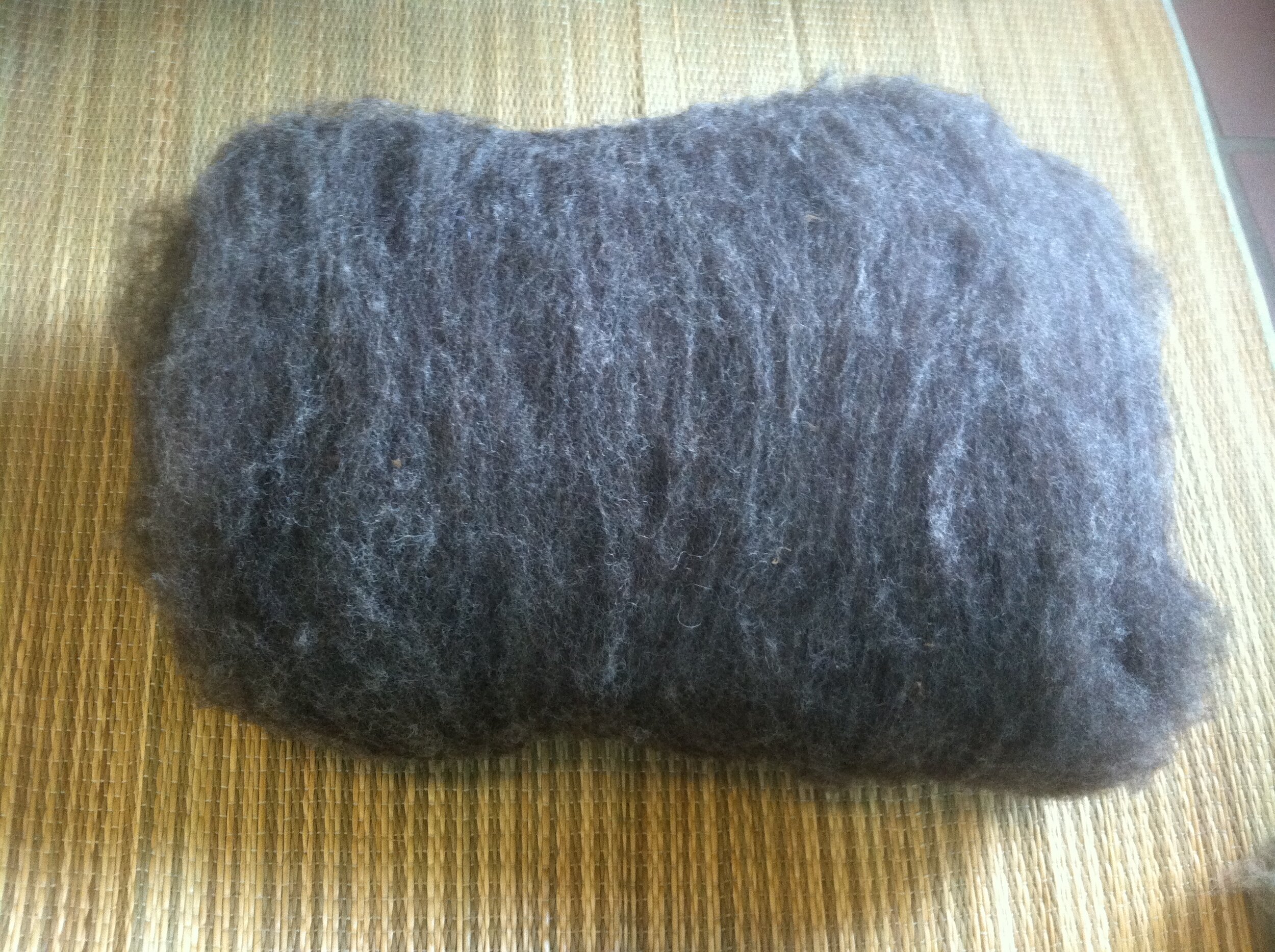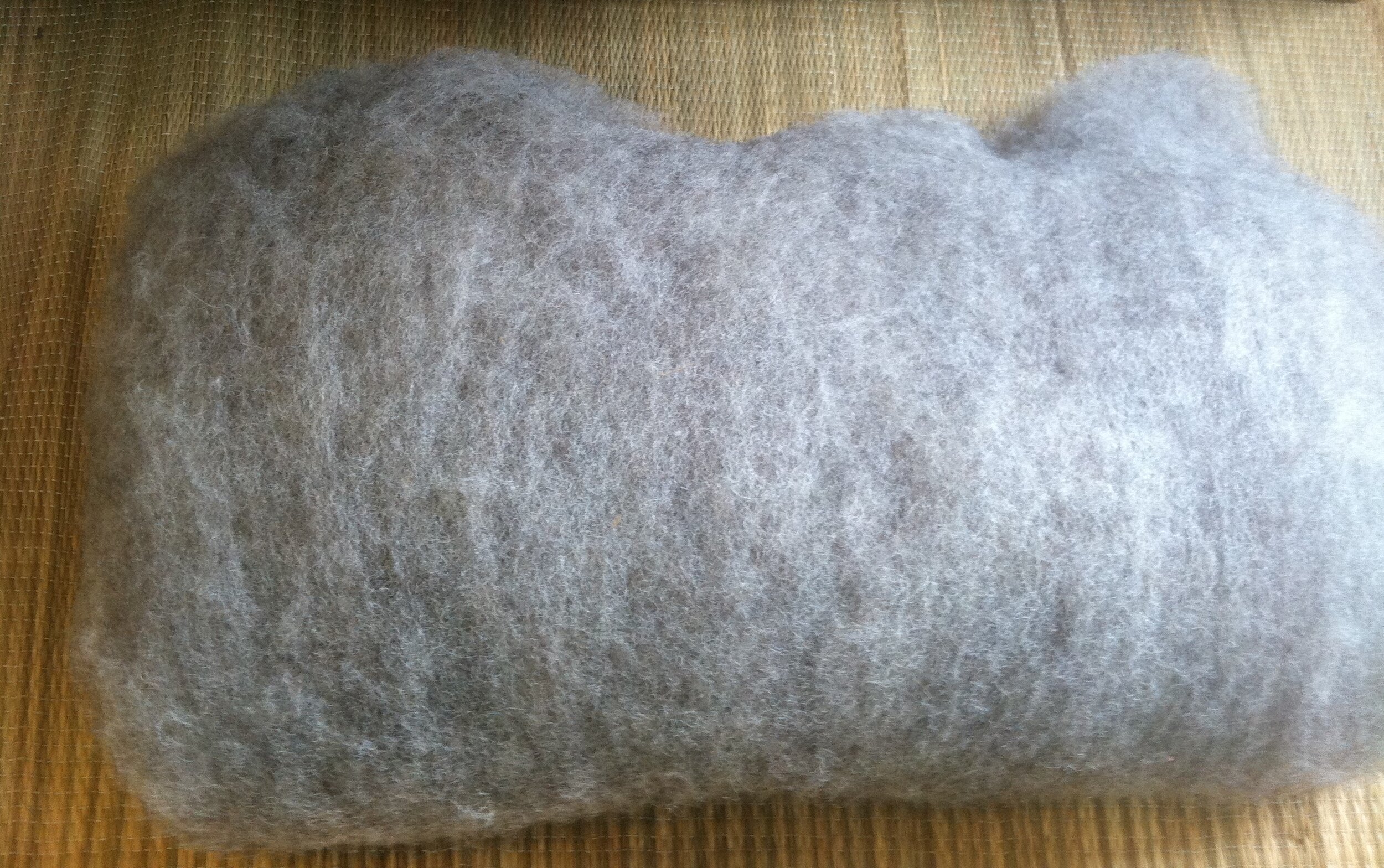After the fleece is washed, the fiber is processed into a form that can be used to create other products.
Roving and Batting
The most common types of fiber preparation are the production of roving and batting. We use our fibers to create both of these. The bulk of our fiber is sent to a mill, but we hand process several pounds a year.
Hand pulling combed top
I create combed top from my fibers. I love the smooth way it drafts when I spin and I love to experiment with blending fibers. This roving creates a smooth worsted yarn. Depending on the fiber type uses, yarns will have variable loft and resilience.
Combed top is created in small lots from single fleeces, either in natural colors or a variety of acid or botanically dyed colors. I enjoy spinning multiple colors at once, to create interesting marled yarns. I find this more fun than using painted or pre-blended colorways and like the clean color combinations that result.
Commercially carded roving is created from selected fleeces chosen for their soft handle and pooled into compatible groups. This roving can be used to create semi-worsted yarn or for felting. This roving can be found here: https://crooked-creek-sheep-and-wool.square.site/shop/roving/13
Batting is made on a carding machine
I use an electric carding machine to create batting, which I use mostly for felting.
Larger batches of fiber from fleeces with similar characteristics in crimp and fiber length are processed into batting at a commercial fiber mill. I currently have 4 lots of grey batts, 1 lot of natural brown and 1 lot white with a lovely luster!. They all have different fiber combinations and felting/spinning characteristics

